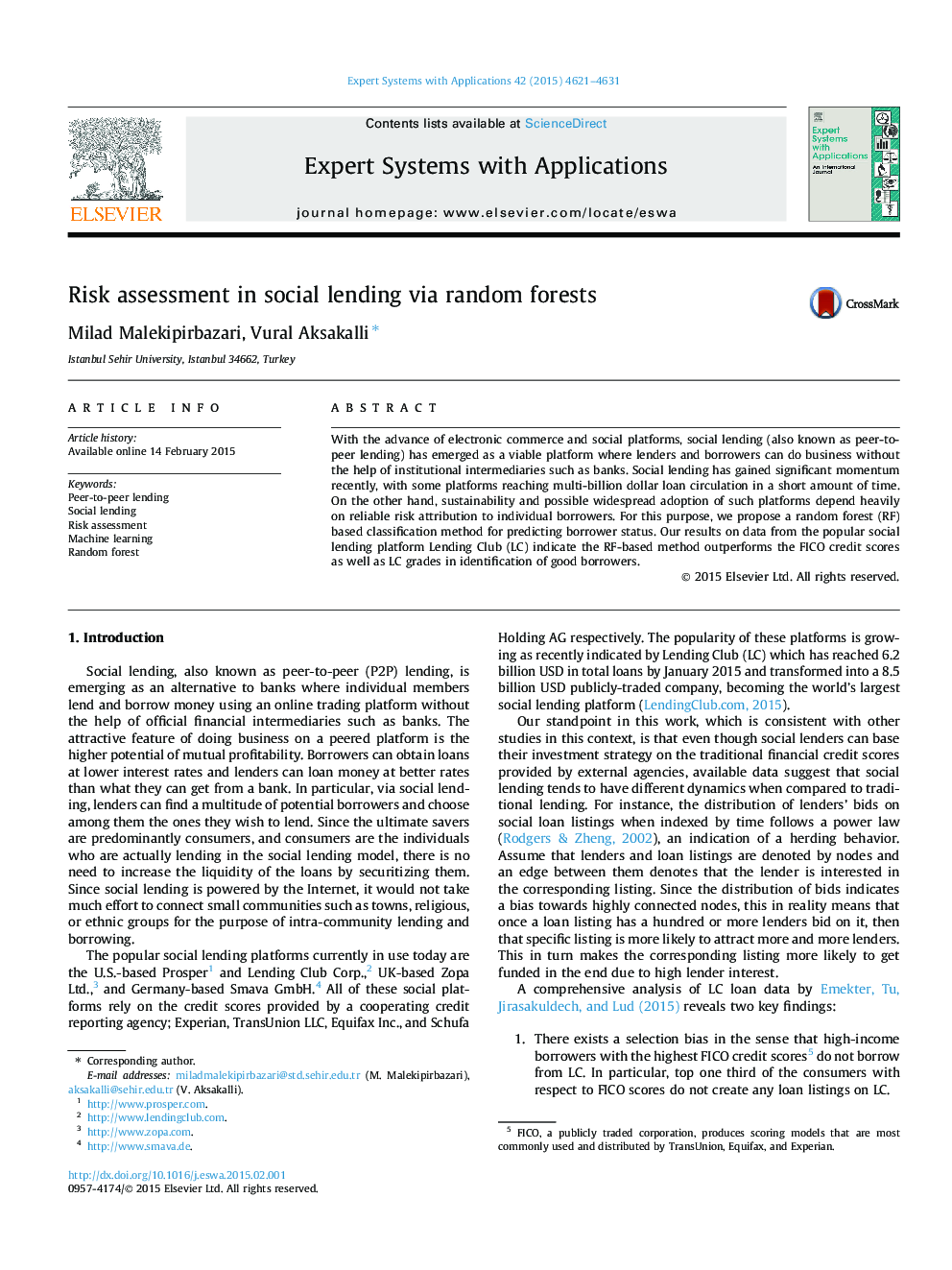| Article ID | Journal | Published Year | Pages | File Type |
|---|---|---|---|---|
| 382167 | Expert Systems with Applications | 2015 | 11 Pages |
•Social lending has emerged as a viable platform alternative to banks.•Widespread adoption depends on better risk attribution to borrowers.•A random forest (RF) based method is proposed for identifying good borrowers.•Our results indicate RF outperforms traditional credit scoring methods.
With the advance of electronic commerce and social platforms, social lending (also known as peer-to-peer lending) has emerged as a viable platform where lenders and borrowers can do business without the help of institutional intermediaries such as banks. Social lending has gained significant momentum recently, with some platforms reaching multi-billion dollar loan circulation in a short amount of time. On the other hand, sustainability and possible widespread adoption of such platforms depend heavily on reliable risk attribution to individual borrowers. For this purpose, we propose a random forest (RF) based classification method for predicting borrower status. Our results on data from the popular social lending platform Lending Club (LC) indicate the RF-based method outperforms the FICO credit scores as well as LC grades in identification of good borrowers.
